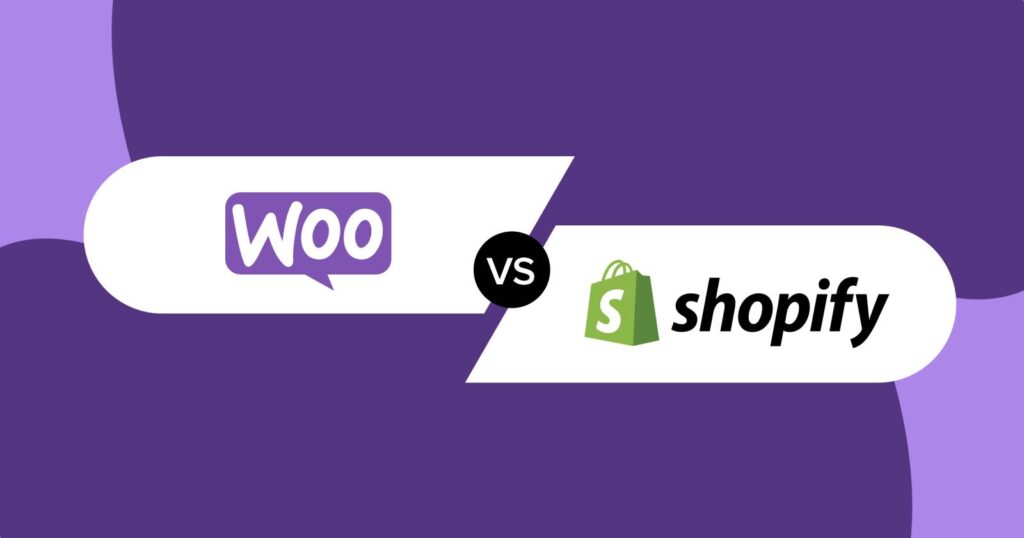When it comes to setting up an online store, two of the biggest contenders are Shopify and WooCommerce. Both platforms offer unique advantages and challenges, making it essential for entrepreneurs to understand which one best suits their needs. In this blog, we’ll dive into the pros and cons of each platform, offering insights from years of experience in e-commerce, and ultimately help you make an informed decision.
Understanding Shopify
Shopify is an all-in-one e-commerce solution designed specifically for online sellers. With over 7 million merchants and generating over $183 billion in sales, it has established itself as a dominant player in the e-commerce space. Let’s explore some of the key benefits of using Shopify.
Pros of Shopify
- User-Friendly Interface: Shopify is known for its ease of use. You can set up a store in as little as four minutes, making it perfect for beginners.
- Professional Templates: It offers a wide range of visually appealing templates, which are more polished than those available on WooCommerce.
- Quality Add-Ons: Although WooCommerce has more apps, the quality of Shopify’s add-ons is generally higher, ensuring better integration and functionality.
- 24/7 Customer Support: Shopify provides round-the-clock support, which is invaluable for resolving issues quickly.
- Faster Load Times: Shopify websites typically load faster than those on WooCommerce, which is crucial for retaining customers.
Exploring WooCommerce
WooCommerce, a plugin for WordPress, is the largest e-commerce platform globally, powering over 36% of all online stores. While it offers great flexibility, it comes with its own set of challenges. Here are some of the advantages of WooCommerce.
Pros of WooCommerce
- Fully Customizable: Unlike Shopify, WooCommerce allows for extensive customization, enabling users to tailor their stores precisely to their needs.
- Ownership Control: With WooCommerce, you own your website fully, meaning you won’t face unexpected shutdowns like some Shopify users have.
- Free Themes and Plugins: WooCommerce offers a wide range of free resources due to its community-driven nature, which can significantly reduce costs.
- Community Support: While it lacks 24/7 support, WooCommerce has a large community of users willing to help with technical difficulties.
Cons of Shopify
Despite its advantages, Shopify has its drawbacks that potential users should consider.
- Higher Costs: Shopify starts at $29 per month, which can be significantly more expensive than WooCommerce, especially when adding multiple websites.
- App Costs: Many of Shopify’s apps and plugins come with additional fees, often making them pricier than similar solutions on WooCommerce.
- Limited Payment Gateway Options: Using third-party payment gateways incurs additional fees, which can add up quickly.
Cons of WooCommerce
While WooCommerce offers great flexibility, it also presents some challenges.
- Technical Difficulties: Users may encounter more technical issues with WooCommerce due to its customizable nature, which can lead to longer downtimes.
- Additional Costs: Although WooCommerce is free, users must still pay for hosting, which can be an additional expense.
- Less Beginner-Friendly: New users may find WooCommerce more challenging to set up compared to Shopify, especially if they lack technical skills.
Comparing the Two Platforms
Both platforms have their unique strengths and weaknesses, making the choice largely dependent on your specific needs and circumstances.
Cost Comparison
Shopify tends to be more expensive upfront, but it offers a straightforward pricing model with all features included. In contrast, WooCommerce is generally cheaper in the long run, especially if you plan to run multiple stores, as you can pay for hosting that supports multiple websites.
Ease of Use
If you’re a beginner with little to no technical skills, Shopify is likely the better choice due to its intuitive interface. WooCommerce may require more effort to set up, but with the right hosting provider, like Hostinger, the process becomes significantly easier.
Conclusion: Which Platform is Right for You?
Ultimately, the decision between Shopify and WooCommerce boils down to your specific needs:
- If you’re looking for a user-friendly platform with minimal maintenance and a robust support system, Shopify is the way to go.
- If you prefer full control over customization and lower long-term costs, WooCommerce is the better option.
Both platforms have their merits, and understanding your business requirements will guide you in making the best choice. If you decide to go with WooCommerce, consider using reliable hosting like Hostinger to streamline your setup and provide necessary support.
FAQs
1. Is WooCommerce really free?
WooCommerce itself is free, but you will need to pay for hosting, which can range from a few dollars a month to more, depending on your needs.
2. Can I migrate from Shopify to WooCommerce?
Yes, it is possible to migrate, but it may require some technical knowledge or assistance from a developer to ensure a smooth transition.
3. Which platform is better for SEO?
Both platforms are SEO-friendly, but WooCommerce offers more flexibility and control over SEO elements, while Shopify provides built-in features that are user-friendly.
4. What payment gateways can I use with WooCommerce?
WooCommerce supports various payment gateways, including Stripe and PayPal, giving you flexibility in how you process payments.
5. Which platform has better customer support?
Shopify offers 24/7 customer support, while WooCommerce relies on community support and the hosting provider’s support services.
In conclusion, whether you choose Shopify or WooCommerce, both platforms have the potential to help you create a successful online store. Evaluate your needs, consider the pros and cons, and take the plunge into the world of e-commerce!
Quick Links:
https://duogeeks.com/
https://duogeeks.com/services/ecommerce-store-development/
https://duogeeks.com/services/website-design/



